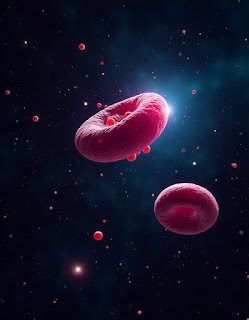Pink Eye- Conjunctivitis
CONJUNCTIVITIS
Pink eye, or conjunctivitis, is an inflammation of the inner surface of the eyelid and the outermost layer of the white portion of the eye. It's an extremely communicable illness.
Touching an infected eye and then touching a surface is how it spreads.
Causes:-
Causes of pink eye include:
.
Viruses
.
Bacteria
.
Allergies
.
A chemical splash in the eye
.
A foreign object in the eye
.
In newborns, a blocked tear duct
Types of conjunctivitis:-
Depending on the cause, other symptoms may occur.
Viral Conjunctivitis
- Can occur with symptoms of a cold, flu, or other respiratory infection
- Usually begins in one eye and may spread to the other eye within days
- Discharge from the eye is usually watery rather than thick
Bacterial Conjunctivitis
- More commonly associated with discharge (pus), which can lead to eyelids sticking together
- Sometimes occurs with an ear infection
Allergic Conjunctivitis
- Usually occurs in both eyes
- Can produce intense itching, tearing, and swelling in the eyes
- May occur with symptoms of allergies, such as an itchy nose, sneezing, a scratchy throat, or asthma
Conjunctivitis Caused by Irritants
- Can produce watery eyes and mucus discharge
- Pink or red color in the white of the eye(s)
- Swelling of the conjunctiva (the thin layer that lines the white part of the eye and the inside of the eyelid) and/or eyelids
- Increased tear production
- Feeling like a foreign body is in the eye(s) or an urge to rub the eye(s)
- Itching, irritation, and/or burning
- Discharge (pus or mucus)
- Crusting of eyelids or lashes, especially in the morning
- Contact lenses that feel uncomfortable and/or do not stay in place on the eye
Prevention:-
By doing these actions, you can prevent conjunctivitis from spreading to other people if you have it:
- Frequently wash your hands for at least 20 seconds using warm water and soap.
- Refrain from rubbing or touching your eyes. This may make the situation worse or cause it to spread to your other eye.
- Wash any discharge from around your eye(s) multiple times a day with clean, damp washcloth or new cotton ball, using clean hands.
- When applying eye drops to both infected and non-infected eyes, do not use the same dispenser or bottle.
- Wash linens, towels, pillows, and washcloths frequently in hot water with detergent; wash your hands after handling them.
- Until your eye doctor gives the all-clear to resume wearing contact lenses, stop wearing them.
- Make sure you thoroughly clean your glasses, taking care not to contaminate communal materials like hand towels.
- Follow your eye doctor's instructions for cleaning, storing, and replacing your contact lenses.
- Personal things including eyeglasses, contact lenses, storage boxes for contact lenses, eye drops, eye or face makeup, brushes, and washcloths and towels should never be shared.
- Avoid using swimming pools.
Treatment:-Anti-viral medicationAnti-bacterial medicationAntihistaminic and vasoconstrictors
- Pink or red color in the white of the eye(s)
- Swelling of the conjunctiva (the thin layer that lines the white part of the eye and the inside of the eyelid) and/or eyelids
- Increased tear production
- Feeling like a foreign body is in the eye(s) or an urge to rub the eye(s)
- Itching, irritation, and/or burning
- Discharge (pus or mucus)
- Crusting of eyelids or lashes, especially in the morning
- Contact lenses that feel uncomfortable and/or do not stay in place on the eye
Prevention:-
By doing these actions, you can prevent conjunctivitis from spreading to other people if you have it:
- Frequently wash your hands for at least 20 seconds using warm water and soap.
- Refrain from rubbing or touching your eyes. This may make the situation worse or cause it to spread to your other eye.
- Wash any discharge from around your eye(s) multiple times a day with clean, damp washcloth or new cotton ball, using clean hands.
- When applying eye drops to both infected and non-infected eyes, do not use the same dispenser or bottle.
- Wash linens, towels, pillows, and washcloths frequently in hot water with detergent; wash your hands after handling them.
- Until your eye doctor gives the all-clear to resume wearing contact lenses, stop wearing them.
- Make sure you thoroughly clean your glasses, taking care not to contaminate communal materials like hand towels.
- Follow your eye doctor's instructions for cleaning, storing, and replacing your contact lenses.
- Personal things including eyeglasses, contact lenses, storage boxes for contact lenses, eye drops, eye or face makeup, brushes, and washcloths and towels should never be shared.
- Avoid using swimming pools.
Treatment:-
Anti-viral medication
Anti-bacterial medication
Antihistaminic and vasoconstrictors








Comments
Post a Comment